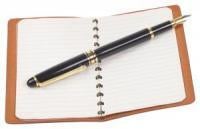Not so long ago, the legal marketplace was much less competitive. Business clients with legal problems would routinely turn to “their” local lawyer or law firm to handle the matter. Case closed.
Today, business clients with legal problems (and tight budgets) are likely to send out a request-for-proposal to a number of potential law firms, and let these firms bid for the business. Lawyers and legal marketers are being asked to respond to increasingly large numbers of these requests.
All too often, RFPs sit on a lawyer’s desk for a few weeks before the lawyer decides that it is time to discuss the pros and cons of creating a proposal with the marketing department. By then, time is short. Nonetheless, these lawyers truly believe that they have a chance of winning the work.
If a firm decides to reply with a proposal, there are many ways that it can distinguish itself from the competition and improve its chances of success. Sometimes, however, the best option is to ignore the RFP as a waste of a firm’s time, talent and treasure.
Sometimes, just say no
“The RFP process is usually rigged,” said Peter Darling. “It may appear objective, but it’s not. Legal work is based on relationships and, often, the likely winner has been selected ahead of time. The RFP is sent out so that the client can claim to have considered 15 firms before selecting this firm.”
Darling discussed the RFP process at the monthly educational program of the Rocky Mountain Chapter of the Legal Marketing Association, held Oc. 8 at Sullivan’s Steakhouse in LoDo, Denver. Darling is founder of Repechage Group, based in Santa Cruz, Calif. He is a lawyer who supplements his legal background with hands-on skill in the fields of marketing, advertising and graphic design.
“A law firm should not respond to every RFP it receives,” said Darling. “If you calculate what it takes to create a good proposal, you will discover that each one is quite costly and, more often than not, a law firm has no chance of winning.
“A response must make measurable business sense,” said Darling. “You must have at least a 50/50 shot at winning to justify the cost. Forty percent of the time, the only response should be a polite ‘no thank you.’ Develop standards for acceptance and create a committee empowered to make this decision.”
A good proposal is not a legal document
If you decide to respond to an RFP with a proposal, do the job right. It should be client-centric, strategic, well-designed and well-written. It must include memorable “win themes.”
”Attorneys are talented when it comes to creating dry legal documents,” said Darling. “This is what they learned in law school and use every day, and they excel at it. As a result, many lawyers think that a proposal for new work should look and read like a dry legal document. It should not.”
In marketing, unlike the law, data and information do not speak for themselves.
“A well-written proposal must look and read like a persuasive sales document,” said Darling. “In the legal universe, lawyers are required to carefully read dull legal documents like briefs, pleadings and cases. In the business development realm, they are not required to carefully read dull proposals. If your proposal is not engaging, it will be neither read nor remembered.”
A good proposal is client-centric
A really good proposal has three key characteristics. It stands out and neither looks nor reads like the others. It has a focused point of view and takes control of the subject. Most importantly, it is client-centric. Good proposals are primarily about the client and not about your law firm.
“Lawyers like to talk about themselves and what they do,” said Darling. “A proposal gives them a chance to do this. Most stuff a proposal with boilerplate information about the firm, its accomplishments and its lawyers. I have seen proposals that consist of 60 percent partner bios.”
This is a mistake. A good proposal should be all about the client, the problems that the client is facing and how the firm can help solve those problems. “In fact, I often recommend that a firm not even mention itself in the first three pages of any proposal,” said Darling.
“Any discussion of your firm, your people and your solution should be used only as supporting evidence, as an illustration of how you can help the client,” said Darling. “It should always be included in the context of how you help clients save money, make money or make their customers happy. Otherwise, this information is just decoration and does not carry its persuasive weight.”
A good proposal reflects a client’s business strategy
A proposal is client-centric when it clearly acknowledges and reflects the business strategy of the client that requested the proposal -- how the client attempts to differentiate itself and successfully compete with its own rivals in the marketplace.
Uncovering a potential client’s business strategy requires research, but it is well worth the effort. A client’s business strategy can be found on its website, social media sites, annual reports, analyst reports, industry and business articles, and Google searches.
“Be straightforward when using this information,” said Darling. “State clearly that a client’s business strategy is ‘x’ and that your firm can help them achieve ‘x’ by doing ‘y.’
If their strategy emphasizes diversity, for example, mention key women as well as racial and cultural minorities in your firm. If their strategy emphasized innovation, discuss how your firm uses information to improve service, manage matters and control costs. If their strategy emphasizes “green” products and operations, show how your firm, too, supports green initiatives.
Inclusion of the client’s strategy demonstrates that you care enough about the client and the potential legal work to do your homework. It demonstrates that you care not only about the client’s legal needs, but its “big picture” business needs as well. It demonstrates important similarities between you and the potential clients. After all, clients want to hire lawyers and law firms with similar values.
A good proposal looks good and reads well
To set a law firm apart from the competition, a good proposal will look less like a legal document and more like a magazine or an annual report. “Design is the ‘suit’ that your proposal wears,” said Darling. “You dress appropriately to meet with a client. Your proposal should be well-dressed as well. You want your proposal to ‘stand out’ from all the others.
“Despite what most lawyers think, the proposal process is neither logical nor rational,” said Darling. “It is primarily emotional. It is based on impressions and reactions to those impressions. Design plays a critical role in making a first (and ongoing) impression on a potential client. The successful proposal will look professional, contemporary, clean and organized.”
A good proposal will take visual cues from the client’s own marketing materials. If the client uses flow-charts in its own materials, use flow charts in your proposal. If the client uses a certain style of photo, use similar photos. When possible, take your own photos of your own people rather than relying on stock images. If the client relies on infographics to explain concepts and processes, use the same tool in your proposal.
“Finally, law firms should refrain from the temptation to use form style or ‘legalese’ in a proposal,” said Darling, “even if the proposal will be read by other lawyers, such as general counsel. Be organized, but informal. Be expert, but relaxed and conversational. Instead of using abstract language, tell concrete and interesting success stories. Have your proposal reviewed and edited by a non-lawyer.”
A good proposal builds on “win themes”
Anyone who has reviewed a set of proposals knows that this process is extremely tedious. Often, the proposals all look alike and say more or less the same thing. It is hard to differentiate among the candidates. It is hard to remember who said what.
“In order to stand out and win in the RPF process, you need to remember that the client can only remember three things about each candidate,” said Darling. “These are your ‘takeaways.’ They must differentiate you and also be something that the client cares about.
“I call these ‘win themes,’” said Darling. “You want to stay on your win themes just like a politician stays ‘on message’ or an advertiser consistently repeats its tagline. By using win themes, you what the potential client remembers.”
Distill your “win themes” into short and simple concepts. While taking care to be natural, repeat these concepts throughout the proposal in both graphics and text. Use them to organize content into sections. Use them as headlines, subheads, breakout quotes or even shaded background on a page.
“Obviously, it takes a lot of work to create a truly persuasive and differentiating ‘sales’ proposal that will help you stand out from the crowd and win new legal work,” said Darling.
“Even if you do not win the work, however, this effort may not be wasted,” said Darling. “Most clients will hang on to your proposal. They will keep it on hand ‘just in case’ they need legal services in the future – especially if your proposal left a good impression. Because proposals have such a long ‘shelf life,’ make the extra effort to ensure they look good and read well – today and in the future.”



 i
i


